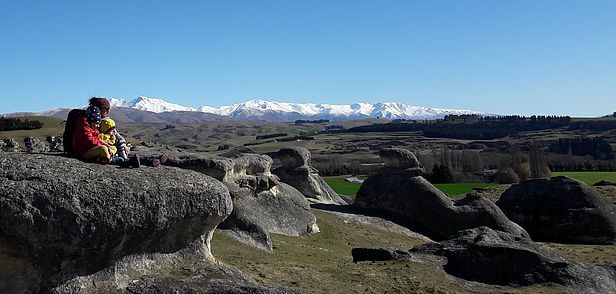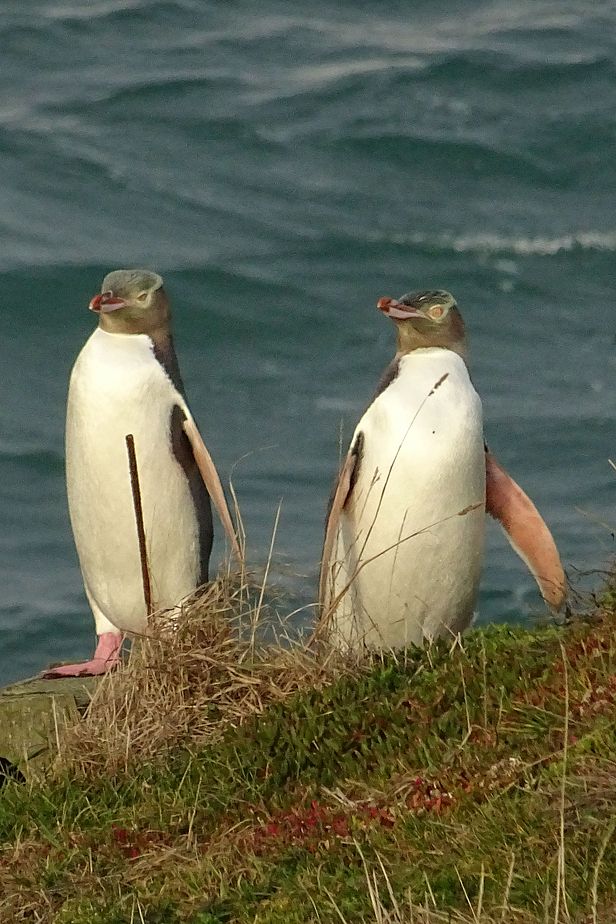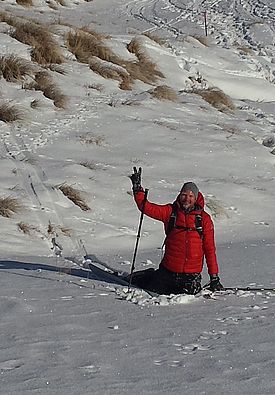23.10.2019 | Logbook
Author
SLF researcher Yves Bühler has already experienced a lot that New Zealand has to offer. While skiing, he has become familiar with treacherous tussocks and tasted the delights of Antipodean snow. But what has impressed him most are the precipitous mountainsides and the truly epic proportions that avalanches can reach here.
We’ve been in New Zealand almost three months now and have settled in well. The days are getting longer and a fascinating array of plants are coming into bloom. The boys are enjoying school and already speak English as if they've been here all their lives. We've also been out on many weekend trips to various parts of the South Island. What we've discovered is that, whether you head to the mountains or the coast, you're likely to find yourself alone and surrounded by stunning scenery – but you'll need a warm (and waterproof!) coat. The weather forecast is more of a rough guide than a reliable prediction.
I've also settled in really well at the university. I kicked things off with a seminar about my work in Davos. That helped break the ice, and people now know what I do and why I'm here. My photos of the Swiss mountains obviously made an impression because after the lecture I was asked by quite a few people about the possibilities of studying in Davos.
The apprentice surveyor
I am making the most of the expertise and lectures here at the School of Surveying, and have had some stimulating discussions. It's made me aware, once again, of the difference between geographers (like me) and surveyors, especially when it comes to coordinate systems. New Zealand's North and South Islands are moving towards each other at a rate of up to 10 cm per year. This not only means a high risk of powerful earthquakes but also makes surveying the country enormously challenging.
There is no such thing as 'fixed points' because everything is on the move. We've been working intensively with the satellite, aircraft and drone data from Davos, analysing, testing and optimising the photogrammetric workflows. The first results for the Davos snow depth map, calculated using the Pléiades satellite data, look promising.
Skiing in August
In early August, I went on my first field trip to set up a new snow depth sensor at a weather station in the Pisa Range. One-day field trips are rarely possible in New Zealand due to the huge distances to be covered.
After spending the night in Wanaka, a ski resort some 200 km north-west of Dunedin, I clipped on my skis for the first time in the southern hemisphere (in August – also a first!). However, the snowpack and terrain came as something of a shock, and I soon learned what the Kiwis mean by a 'tussock turn': the abrupt braking required by tufts of grass protruding above the thin blanket of snow. But the landscape was magnificent, and even the weather was on our side.
Exciting avalanche problems
A second trip followed in late August. New Zealand has few avalanche problems overall, but arguably one of the most spectacular in the world at Milford Road. This key tourist artery runs over a pass and through a tunnel at an altitude of 1,000 metres as it makes its way the short distance to the west coast. It attracts many coachloads of tourists eager to experience the jaw-dropping scenery.
Peaks here reach elevations of 2,500 metres, and being located on the 45th parallel south, the area bears the full brunt of the Roaring Forties. These strong westerly winds drive large quantities of moisture up against the mountains, resulting in annual precipitation of around 8,000 mm – eight times more than in Davos! This often falls as snow in winter, but sometimes as rain on the massive snowpack. And then there's the terrain, which is incredibly steep with numerous vertical rock walls and altitude differences of up to 2,000 metres.

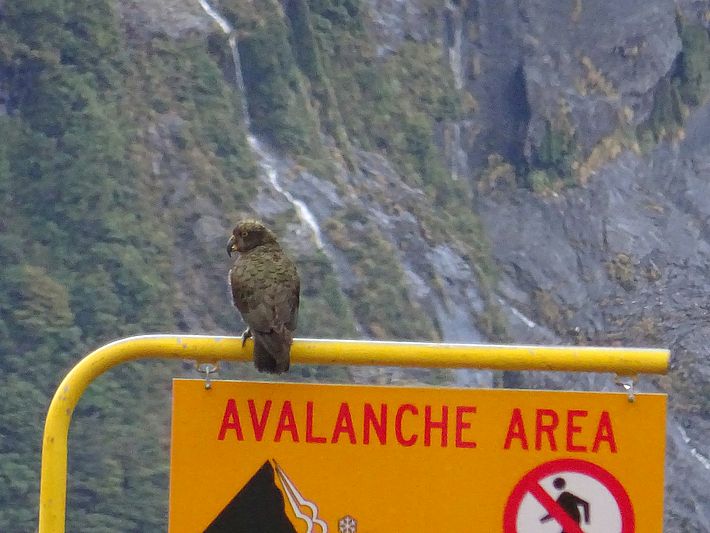
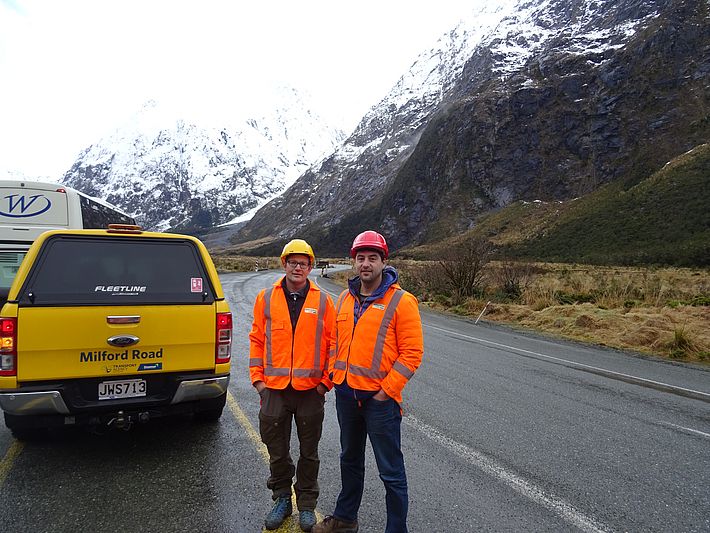
We visit the people at the avalanche warning service responsible for this highway and they assure us: Milford Road is different. They show us pictures of immense avalanches, with deposition depths the likes of which I've never seen before. The large volumes of snow and extreme terrain mean that protective structures are virtually pointless. All work to manage the risk and protect the road takes place from a helicopter, using explosives. Following intensive discussions with the warning team, we agree that we'd like to test the powder-avalanche module of our RAMMS simulation program here. In these conditions, even wet snow avalanches develop high-pressure dust clouds, so it's sure to be exciting! Awestruck, we drive the six hours back to Dunedin that evening.
PS: Although we've experienced a lot in the past three months, we haven't yet seen any orcas. Hopefully I'll be able to report on that in my next post!
